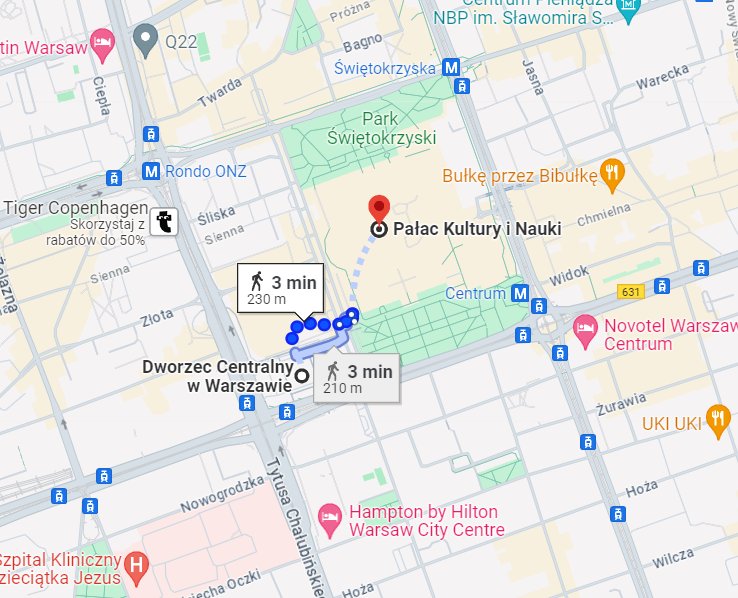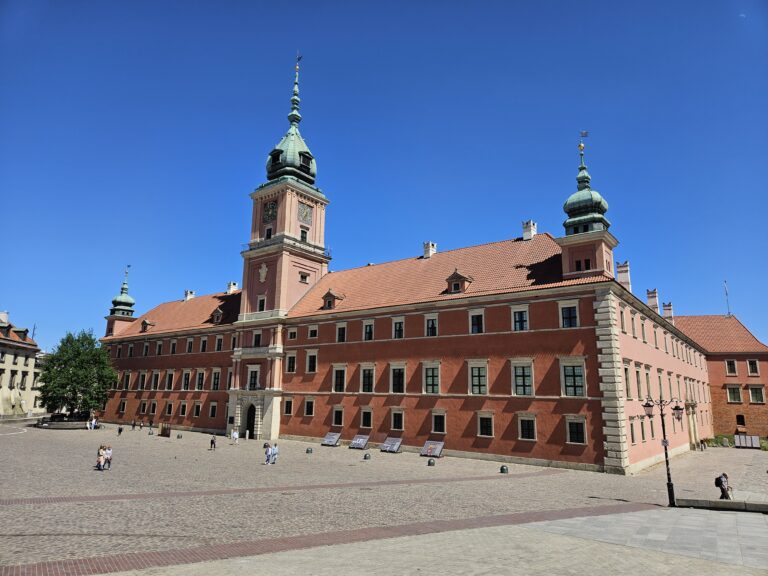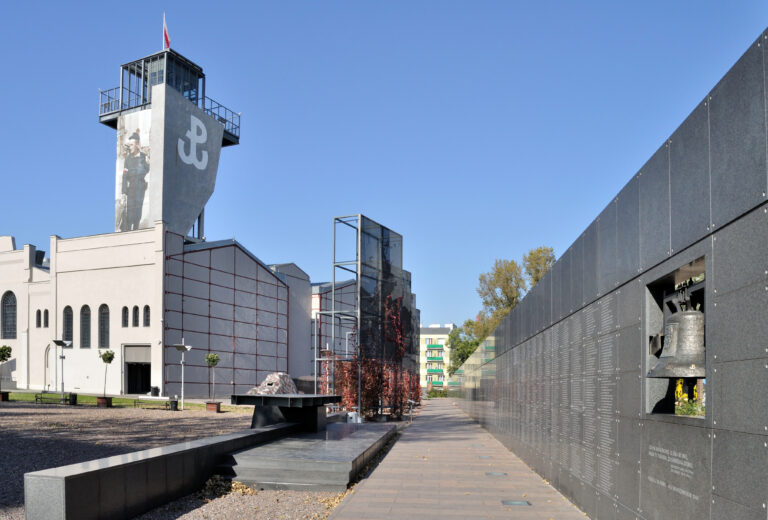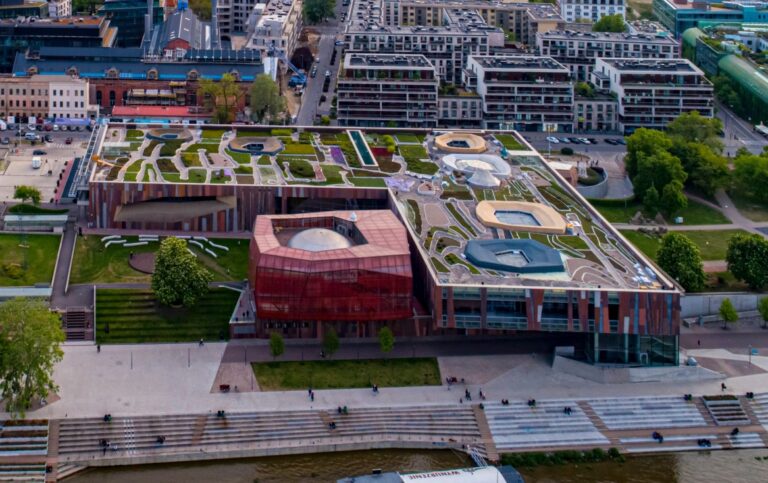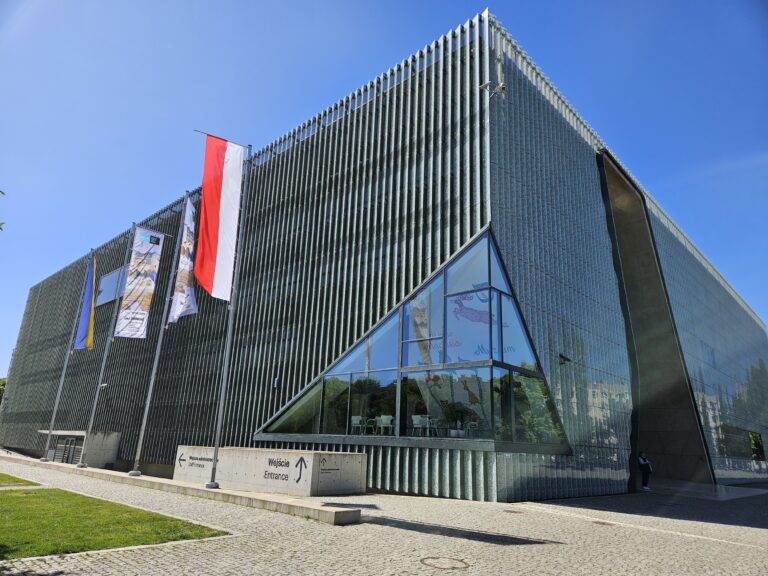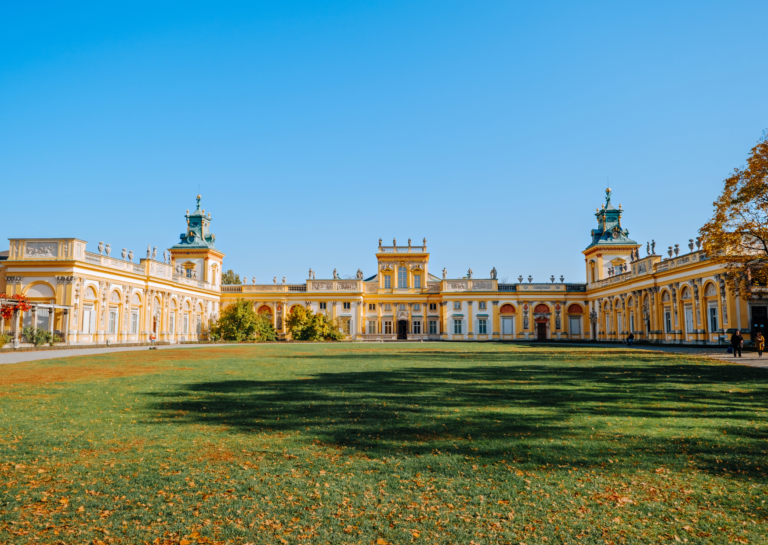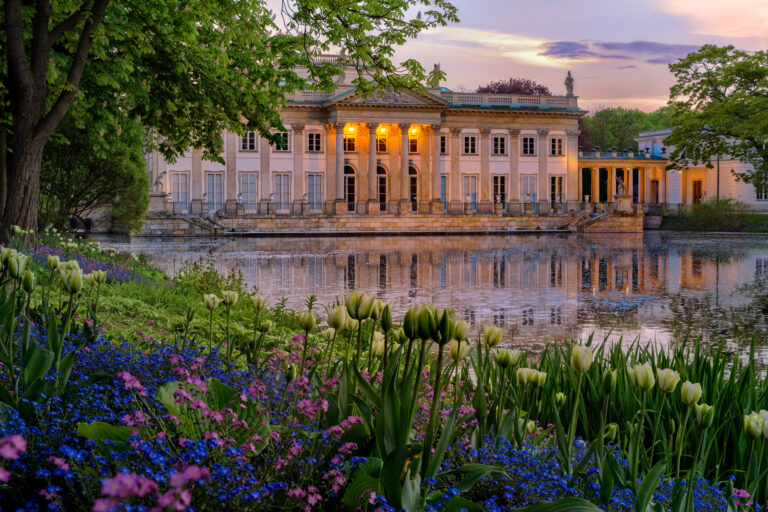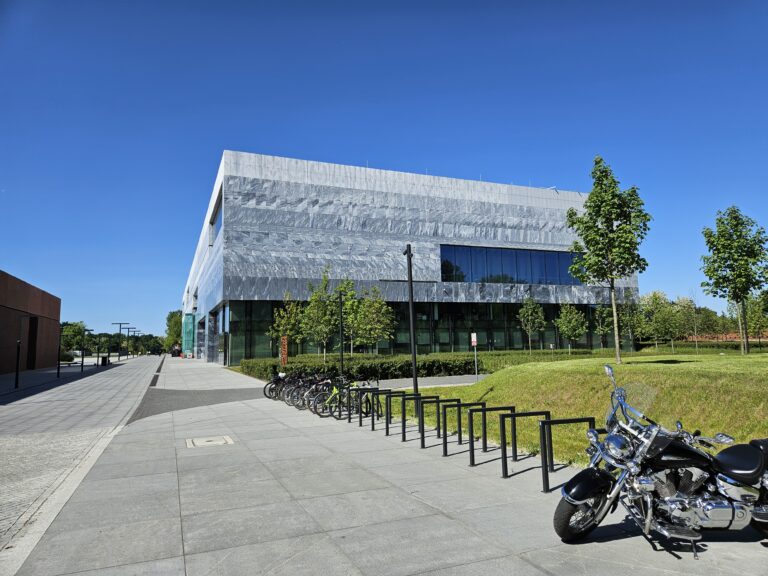Palace of Culture and Science

Palace of Culture and Science, Interiors + Observation Terrace
How to get to Palace of Culture and Science
The parking lot in the immediate vicinity of the Palace of Culture and Science has a limited number of spaces, therefore the best solution is to leave the car on the streets close to the museum, e.g. Świętokrzyska, Emilii Plater, al. Jerozolimskie and in private parking lots.
There are many public transport stops near the Palace of Culture and Science in Warsaw.
Buses:
116, 157, 171, 175, 178, 507 – Plac Defilad stop
102, 157, 178, 504 – Emilia Plater stop
100, 157, 178, 500 – Marszałkowska stop
Trams:
7, 10, 13, 15, 18, 24, 25 – Plac Defilad stop
7, 10, 35 – Emilia Plater stop
15, 18, 24, 25 – Marszałkowska stop
Metro:
1st metro line – Metro Centrum station
Detailed bus and tram timetables can be checked on the website www.jakdojade.pl
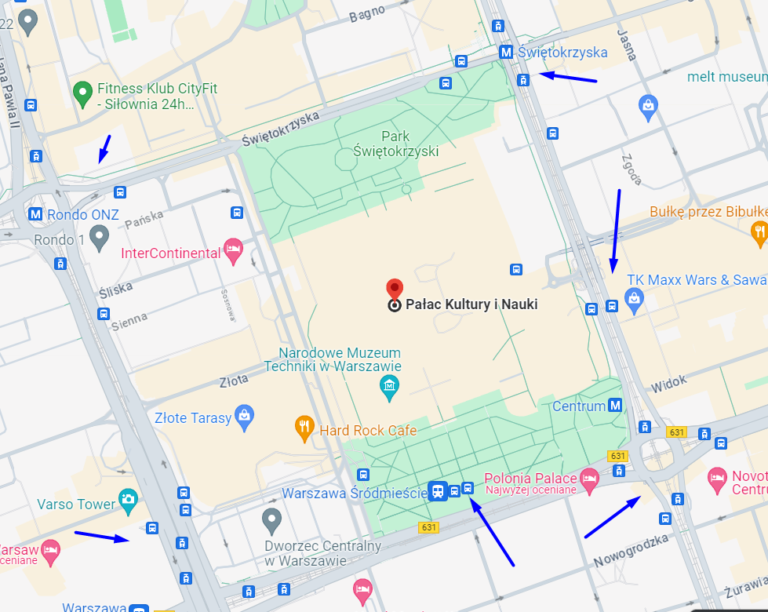
What will you see when visiting the Palace of Culture and Science
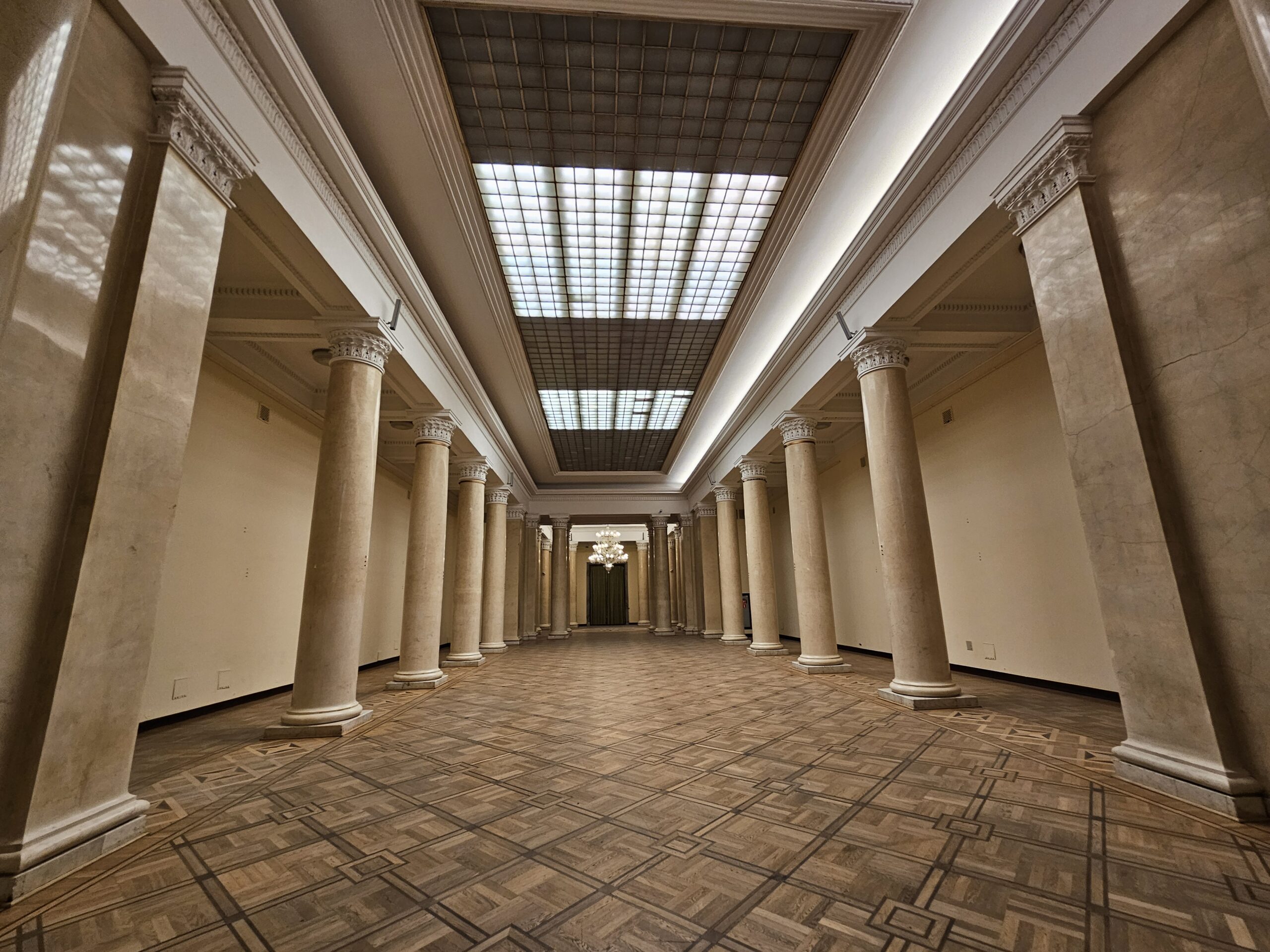
Travel back in time, discovering the interior of the Palace of Culture and Science and their unique architecture. Discover the secrets hidden in the halls that have witnessed cultural and scientific events for years. When visiting the Palace of Culture and Science, you can admire historic details and monumental spaces that delight with their majesty.
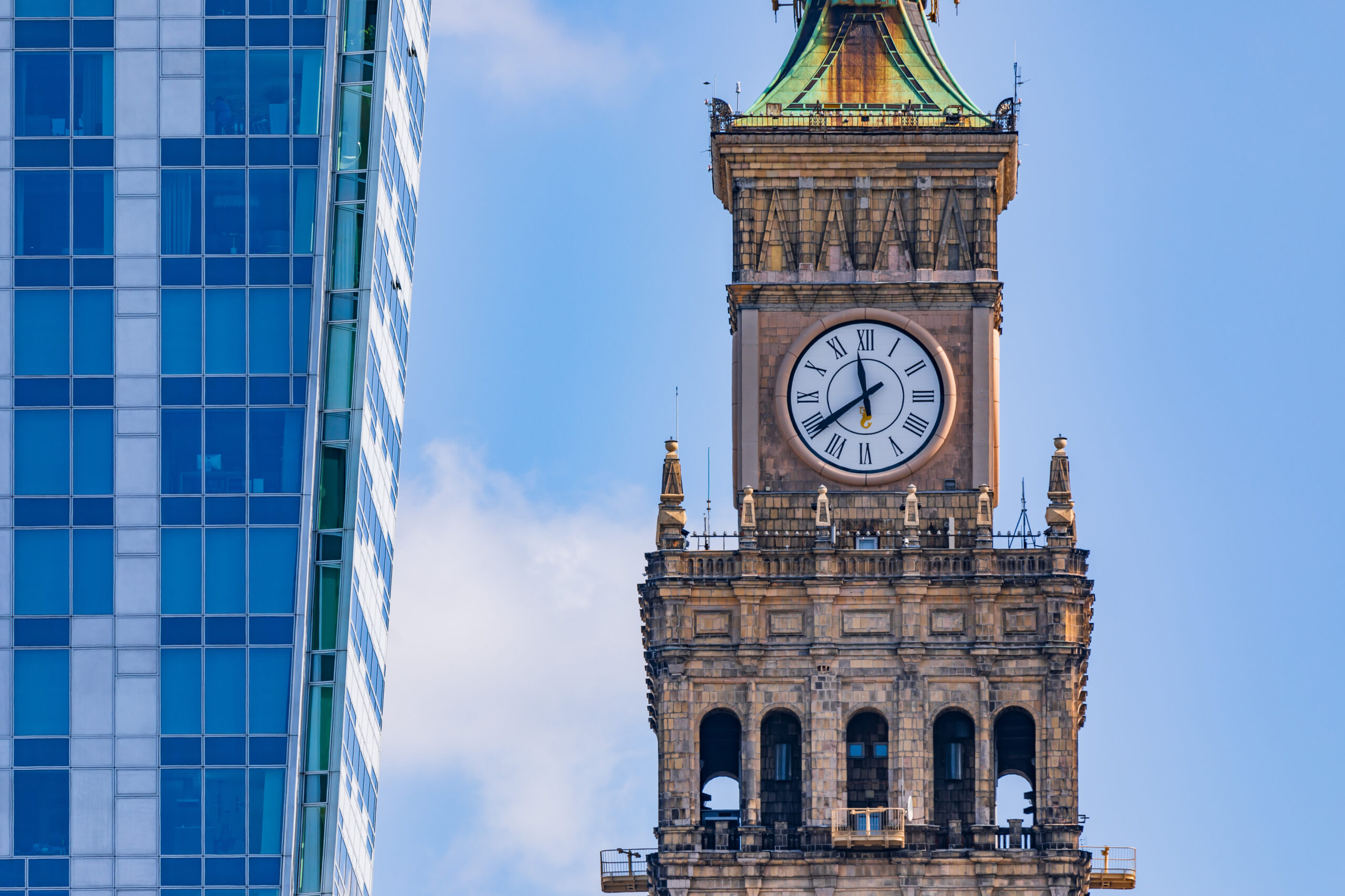
Discover the city from the highest floor available for sightseeing and admire the panorama of Warsaw from the observation deck of the Palace of Culture and Science. This extraordinary experience will allow you to look at the city from a completely new perspective and appreciate its beauty and dynamics.
While visiting the Palace of Culture and Science, travel back in time and learn about the fascinating history of this iconic building. The available zones will show the importance of the Palace for post-war Warsaw. Discover how this building became one of the most recognizable symbols of the capital, witnessing many important historical events.
Palace of Culture and Science Google reviews:
Touring Palace of Culture and Science with children
The museum allows you to move around with a stroller, which ensures comfort and safety for the youngest visitors.
The Palace of Culture and Science tour includes many aspects, such as architecture and historical figures, that may be difficult for children under 12 years of age to understand. Nevertheless, we are convinced that every age group will find something for themselves in the fascinating interiors of the Palace and on the observation deck, where you can admire the panorama of Warsaw without time limits.
During the visit, young people have the opportunity to learn about the complex and intense historical events that shaped today’s Warsaw. Thanks to the guide, they can explore the secrets of the construction of the Palace of Culture and Science, its role in the post-war reconstruction of the city and its cultural and social significance. It is not only a history lesson, but also an inspiring journey that encourages reflection on the past and its impact on the modern world.
Frequently Asked Questions
Every day from 10:00 to 20:00
The number of people staying at the Palace of Culture and Science at the same time is limited, so booking tickets and tours in advance ensures a comfortable visit to the facility and better planning of time.
Visiting the interior of the Palace of Culture and Science is not possible without a guide. By taking part in a guided tour, you will have the opportunity to explore the history and secrets of this Palace and learn more about its importance for Warsaw and Poland. The guide will also tell you about the different rooms available in the Palace, which will allow you to better understand the cultural and scientific richness of this place. Moreover, during the tour you will have the opportunity to ask questions and learn more about the issues related to the Palace that interest you.
Tickets available at warszawa-bilety.pl
In the Palace of Culture and Science there are three places intended for gastronomy: two cafes on level 0 and a cafe on the observation deck.
Visiting the interior of the Palace of Culture and Science in Warsaw takes an average of 1.5 hours with a guide. This time may vary depending on the individual pace of sightseeing and interests. After visiting the interior, you can go to the observation deck, where the time spent admiring the city panorama is unlimited.
Yes, the Palace of Culture and Science is accessible to people with disabilities. The property has elevators and special facilities for wheelchair access. In addition, toilets are also adapted for people with disabilities. People with disabilities can freely visit and use the facilities available in the Palace of Culture and Science.
The cloakroom of the Palace of Culture and Science does not store luggage. Luggage must be left in the paid storage room on level 1.
Taking photos in the Palace of Culture and Science is allowed, but you must behave politely towards other visitors, avoiding using a flash and not disturbing others while sightseeing.
Palace of Culture and Science
This unique place offers a fascinating journey through history, enabling a better understanding of contemporary Warsaw. The Palace of Culture and Science is an architectural icon symbolizing the era of socialist realism and Polish-Soviet relations. Its impressive silhouette is an inseparable element of the city’s panorama. The Palace of Culture and Science has served and still serves as a cultural, scientific and business center, attracting numerous artistic events, conferences and exhibitions.
The exhibition inside the Palace of Culture and Science shows its history and role in the life of the city. Visitors have the opportunity to learn more about the origins of this monumental building and its importance for Warsaw and Poland. Walking through its interior, you can learn fascinating facts related to its construction and learn about the history of cultural and scientific events that took place within its walls.
The Palace of Culture and Science is not only an attractive viewpoint, but also the center of Warsaw’s social and cultural life, continuing its role as a symbol of dynamism and progress. Its importance as a place of meeting, inspiration and reflection transcends architectural boundaries, making it an integral part of the city’s cultural heritage.
